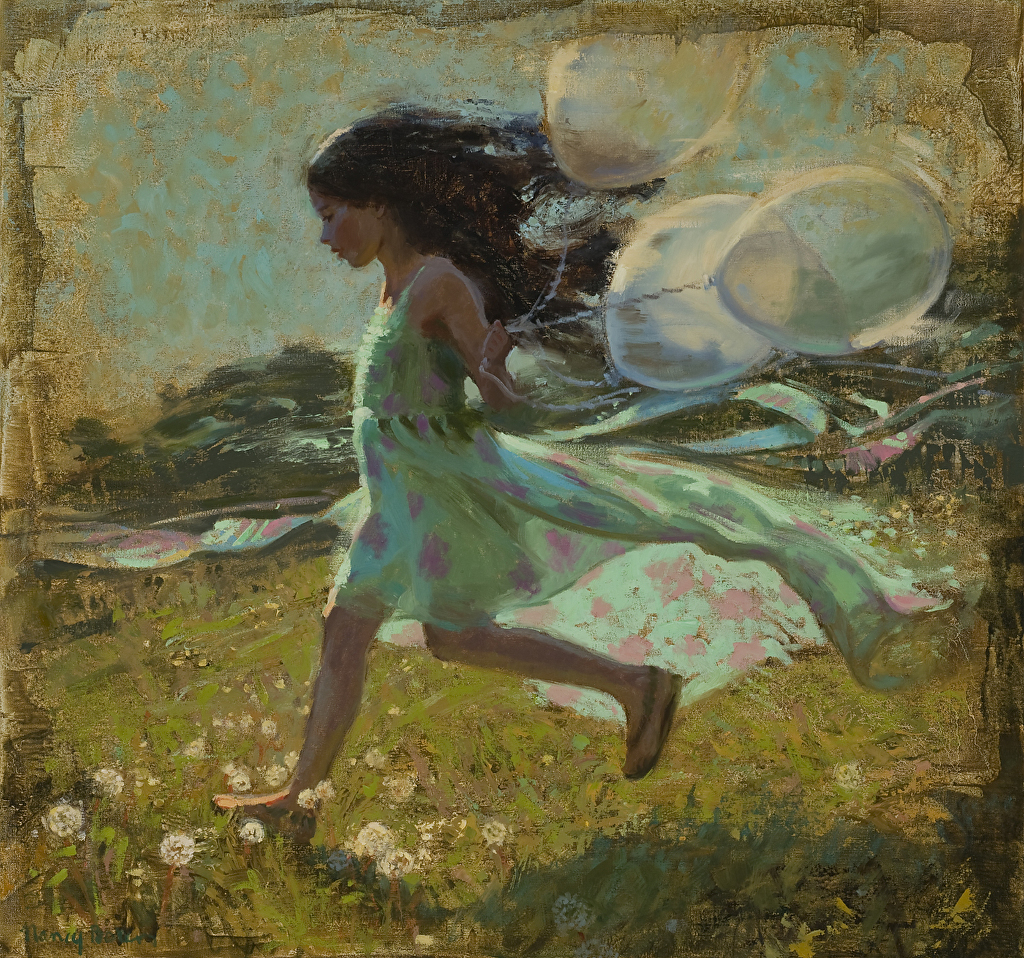Limited Edition Collectible Oil Paintings for Sale
Limited Edition Collectible Oil Paintings for Sale
Blog Article
Checking out Everything About Oil Paints: A Guide to Recognizing Their Beauty and Worth
Oil paints have astounded audiences for centuries, providing a glimpse right into the imaginative mastery of different ages. Their rich history is intertwined with ingenious techniques and extensive emotional expression. Comprehending the materials and techniques behind these art work can enhance gratitude. In addition, the market for oil paintings presents opportunities for capitalists and enthusiasts alike. As one discovers this fascinating globe, the inquiry occurs: what makes an oil painting really beneficial?
The Background of Oil Painting: A Trip With Time
Although oil paint has origins that date back to ancient times, it really flourished during the Renaissance, when musicians discovered its convenience and rich color possibility. Early examples can be traced to the 7th century, with techniques evolving especially across societies. The medium ended up being prominent in Northern Europe in the 15th century, especially via the jobs of artists like Jan van Eyck, that originated its usage for comprehensive realism and vibrant hues. This period noted a separation from tempera paints, enabling for higher depth and texture. As oil paint spread, it affected plenty of musicians, causing work of arts by popular figures such as Leonardo da Vinci and Rembrandt. The tool's legacy proceeds, shaping the art globe well right into modern times.
Comprehending Oil Repaints: Materials and Techniques
As musicians explore the globe of oil paints, they run into a varied range of materials and methods that define this tool. The key parts of oil paint consist of pigments, which provide color, and drying oils, such as linseed, that bind the pigments and promote application. Various ingredients can change the paint's structure and drying out time, boosting adaptability. Techniques like glazing, where clear layers are developed, and impasto, which involves applying thick paint, permit different visual effects. In addition, using brushes, palette knives, and also fingers can create distinct textures and finishes. Understanding these materials and methods enables musicians to completely share their imagination and achieve the preferred influence in their artwork.
The Role of Color in Oil Paintings
Color plays a pivotal function in oil paintings, influencing both visual charm and psychological vibration. Comprehending shade theory essentials, consisting of the relationships between tones, can boost a musician's capacity to share state of mind and atmosphere. Additionally, understanding shade mixing strategies allows for greater deepness and richness in a paint's combination.

Shade Theory Essential
Recognizing shade theory is important for musicians working with oil paints, as it forms the foundation for creating aesthetically appealing and harmonious make-ups. Shade concept incorporates the research of exactly how shades interact, the color wheel, and the connections in between main, additional, and tertiary colors. Musicians make use of complementary colors to boost contrasts and produce focal points, while comparable shades promote unity and cohesiveness within a piece. Additionally, the ideas of warm and cool colors influence the perception of depth and room in a painting. Grasping these concepts permits musicians to manipulate shade properly, directing the visitor's eye and interacting their intended message. Mastery of shade concept eventually enhances a musician's ability to convey feelings and ideas through their work.
Emotional Effect of Shade
The psychological influence of color in oil paints plays a vital role in just how viewers regard and attach with artwork. Colors evoke details feelings and moods, influencing the visitor's psychological state. Cozy colors like reds and oranges can produce a feeling of heat and energy, while cool tones such as blues and greens usually stimulate peace or introspection. Artists tactically pick shade combinations to improve narrative aspects, directing the audience's psychological journey. The saturation and comparison of shades better enhance these results, attracting interest and creating emphasis. Ultimately, the interaction of colors in oil paintings not just boosts their aesthetic charm but likewise acts as an effective medium for psychological expression, improving the visitor's experience and interpretation.
Shade Combining Techniques
While numerous facets of oil paint add to the overall make-up, understanding color blending strategies is essential for accomplishing desired results and deepness. Shade blending can be approached through various approaches, including the additive and subtractive processes. Additive blending entails combining shades of light, while subtractive mixing depends on pigments, where colors blend to produce new shades. Musicians often utilize a limited combination to create harmonious works, comprehending the partnerships in between main, secondary, and tertiary shades. Methods such as glazing and scumbling even more enhance deepness and luminosity. By masterfully mixing shades, a musician can evoke emotions, create focal points, and accomplish a sense of realistic look, ultimately elevating the painting's psychological and aesthetic impact.
Famous Oil Painters and Their Iconic Works

Famed for their mastery of shade and technique, oil painters have actually developed a few of one of the most well known art work in background. Prominent musicians like Vincent van Gogh captivated audiences with his stirring brushwork in "Starry Evening," while Claude Monet's "Impact, Sunup" prepared for Impressionism. Leonardo da Vinci's "Mona Lisa" stays a long-lasting sign of creative genius, showcasing his skill in catching human expression. Rembrandt's "The Night Watch" highlights his cutting-edge use of light and darkness. Other notable figures consist of Pablo Picasso, who reinvented modern-day art with his bold experimentation in jobs like "Les Demoiselles d'Avignon," and Georgia O'Keeffe, whose vivid depictions of landscapes and blossoms aided define American modernism. Each musician's distinct style added significantly to the oil paint landscape.
How to Review the High Quality of an Oil Paint
Assessing the quality of an oil painting includes a careful assessment of workmanship techniques, as well as an analysis of color and make-up. Observing brushwork, layering, and the application of paint can reveal the musician's skill degree. In addition, the interplay of shades and the general arrangement of components contribute considerably to the paint's aesthetic value.
Analyzing Workmanship Techniques
A meticulous assessment of workmanship methods is vital for identifying the top quality of an oil painting. Evaluators should first analyze the application of paint; thick, distinctive brushstrokes might recommend a knowledgeable hand, while extremely uniform applications can show a lack of depth. oil paintings for sale. The layering method is also essential; the presence of lusters and varied density can improve luminosity and complexity. In addition, the quality of the materials utilized, such as the canvas and pigments, plays a substantial duty in longevity and general visual. Interest to detail in elements like sides and changes in between shades mirrors the artist's dedication to their craft. Ultimately, these strategies add to the paint's emotional effect and market price, offering as indications of the musician's skill and intent
Evaluating Color and Structure
While evaluating the top quality of an oil painting, one have to concentrate on the interplay of shade and structure, as these elements are fundamental to the artwork's general influence. Color choices can develop and evoke emotions mood; for that reason, the musician's combination ought to be taken a look at for harmony and comparison. A well-balanced composition routes the audience's eye and produces a sense of unity. Musicians frequently utilize strategies like the policy of thirds or leading lines to improve visual rate of interest. Furthermore, making use of light and shadow can include deepness, improving the three-dimensionality of the paint. Inevitably, a successful oil painting marries color and make-up, involving the customer and inviting a much deeper recognition of the musician's vision and strategy.
Caring for and Preserving Oil Paintings
Correct care and conservation of oil paintings is crucial for preserving their stability and long life. To secure these art work, it is important to display them far from straight sunshine, which can trigger fading and discoloration. Keeping a secure atmosphere with controlled temperature level and humidity additional aids in stopping damage. Cleaning up must be done carefully utilizing a soft, completely dry fabric, staying clear of any rough chemicals that might damage the paint or varnish. Normal evaluations for indications of deterioration, such as splitting or flaking, are suggested. When storing or transporting oil paints, correct cushioning and framework are required to avoid physical injury. Inevitably, diligent care contributes to the aesthetic charm and value of oil paints in time.
The Marketplace for Oil Paints: Collecting and Spending
Comprehending the market characteristics for oil paints is necessary for investors and collection agencies alike. The value of these artworks is influenced by different factors, consisting of the musician's online reputation, historical importance, and current patterns. Collectors commonly look for pieces that reverberate personally while taking into consideration potential admiration in worth. Auctions and galleries function as main venues for trading, with prices fluctuating based upon need and rarity. Buying oil paints needs research study into the market, in addition to an understanding of credibility and provenance. Additionally, emerging musicians may offer possibilities for significant returns, while established names can regulate high costs. In general, a strategic technique to collecting can produce both aesthetic satisfaction and economic incentives.

Regularly Asked Concerns
What Are the Ecological Effects of Oil Painting Materials?
The environmental effects of oil paint materials consist of the launch of volatile organic substances (VOCs), hazardous waste generation, and source extraction for pigments. These elements add to pollution and eco-friendly destruction, raising worries among eco aware musicians and customers.
Exactly How Do Various Canvases Influence Oil Paint Results?
Various canvases affect oil paint results substantially. Absorbency, appearance, and surface area quality can modify paint application, drying out times, and shade vibrancy. Artists usually pick certain canvases to attain wanted impacts and boost their artistic expression.
Can Oil Paintings Be Recovered if Harmed?
Oil paints can indeed be brought back if harmed. Professional conservators use various methods to repair rips, tidy surfaces, and address staining, guaranteeing that the artwork keeps its initial elegance and value for future generations.
What Are the Signs of an Original Oil Paint?
The indicators of an original oil painting consist of noticeable brush strokes, appearance variants, and an uneven canvas weave (oil paintings for sale). Furthermore, credibility may be verified with provenance, signatures, and the presence of a varnish layer unique to oil mediums
How Has Innovation Influenced Modern Oil Painting Techniques?
Modern technology has actually significantly affected modern-day oil painting methods by presenting electronic devices for preparation, improved materials for structure and durability, and on the internet systems for selling and sharing art, consequently broadening artists' innovative opportunities and target market reach. Oil paint has origins that date back to old times, it genuinely prospered throughout the Renaissance, when artists found its adaptability and abundant shade possibility. The psychological effect of shade in oil paintings plays an essential role in how visitors regard and connect with artwork. While numerous facets of oil paint contribute to the general make-up, understanding shade blending strategies is essential for achieving preferred results and deepness. Examining the high quality of oil paintings for sale an oil painting includes a careful evaluation of craftsmanship techniques, as well as an evaluation of color and composition. While evaluating the top quality of an oil paint, one have to focus on the interplay of shade and make-up, as these aspects are basic to the artwork's general impact.
Report this page